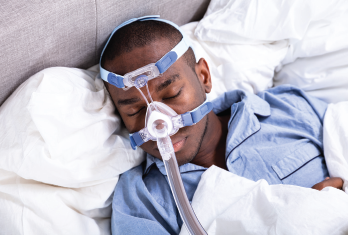Among veterans with OSA, Black race was associated with reduced PAP adherence, suggesting health inequality among Black individuals in the treatment of OSA.


Among veterans with OSA, Black race was associated with reduced PAP adherence, suggesting health inequality among Black individuals in the treatment of OSA.
Growing vestibular schwannomas (VSs) show higher signal intensities on Gd-enhanced MRIs and, therefore, measuring signal intensity of VS on Gd-enhanced MRI may aid in predicting VS growth.
Preoperative imaging should be integrated with intraoperative findings based on endoscopic inspection and frozen sections in patients with maxillary cancer.

We review the current evidence to determine if cochlear implantation is an effective intervention for auditory rehabilitation after vestibular schwannoma treatment.

There is no conclusive evidence that extraction is required when a healthy tooth is present within the fracture line.

Currently, there are no guidelines for the management of retained tubes in asymptomatic patients. Should they be removed?

Tranexamic acid (TXA) is an antifibrinolytic agent that inhibits clot breakdown and is well described in the literature toreduce intraoperative blood loss in craniofacial, cardiac, trauma, dermatologic, and orthopedic surgeries.

There are differences between how a community-based practice and a tertiary care center might approach head and neck cancer diagnosis. But what are they and why do they exist?

Diagnosing and addressing hearing loss, particularly in midlife, can help ameliorate the increased risk of dementia associated with the hearing loss.

A liquid biopsy-based test to diagnose HPV-associated cancers may offer improved accuracy at a reduced cost and with a shorter time to diagnosis.